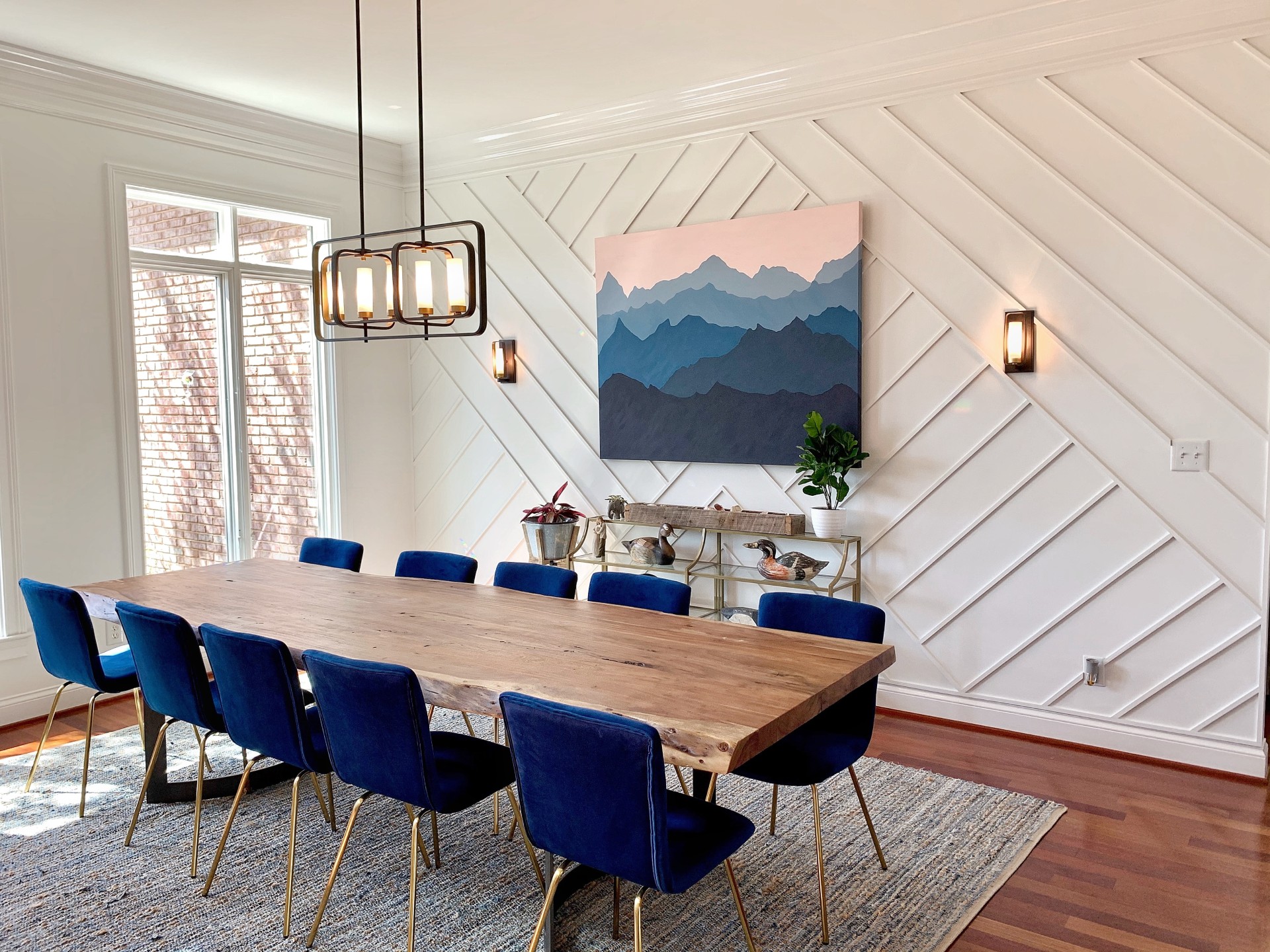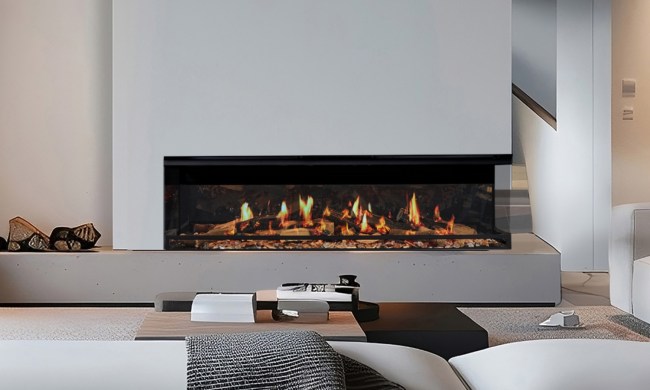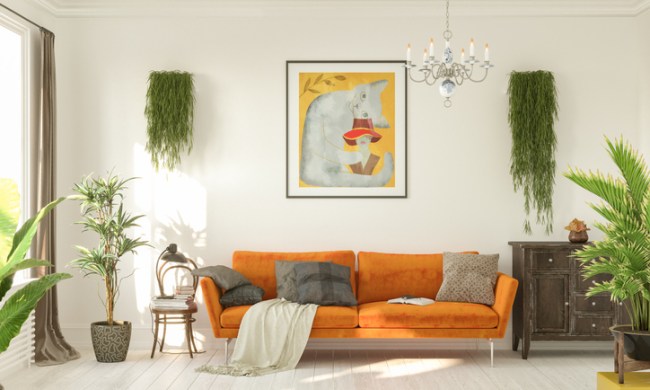Your dining room should be an inviting space that encourages everyone to gather together, share a delicious meal, laugh, and make memories. If the dining room table is the room's centerpiece, think of the dining room rug below it as the frame. The right rug will give the perfect foundation to direct the color palette and vibe you're going for in the space overall. Finding the best match for your dining room and your home's decor can be challenging, though. After all, it must look beautiful and be durable enough to stand up to the room's purpose.
There are several factors to consider when choosing the perfect rug for the dining room. Learn how to find one that will take your traditional dining room from drab to delightful.
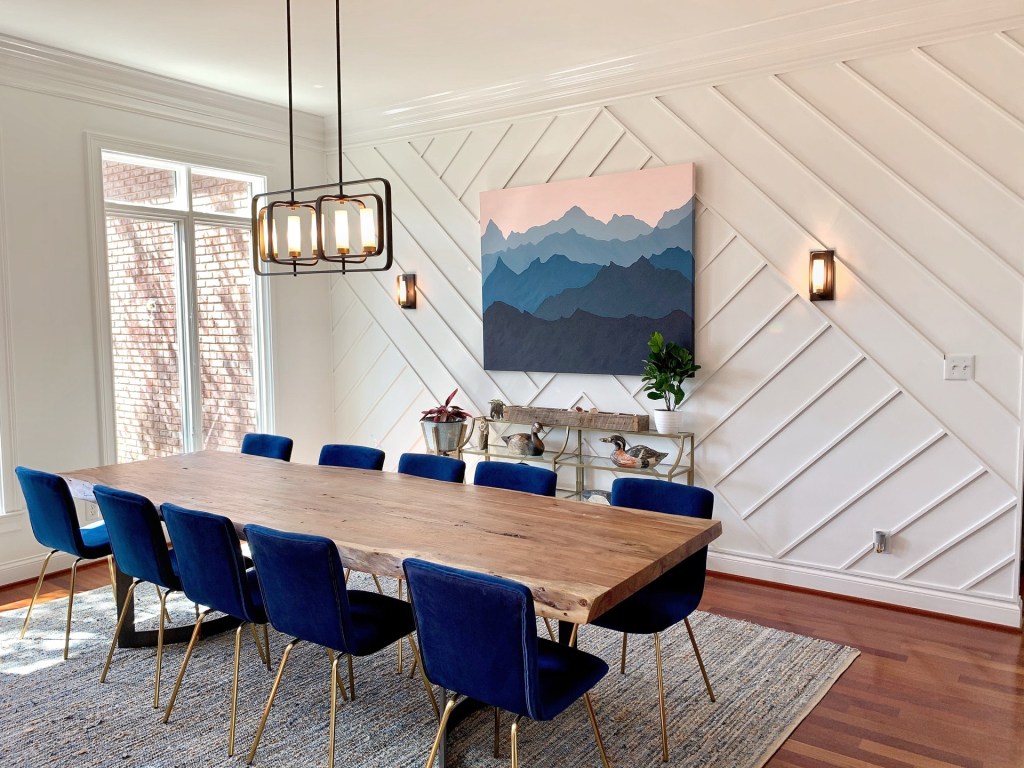
Consider the size of the rug and the room
A rug’s design purpose is to designate the focal point of the room by grounding what sits on top or around it. One of the biggest mistakes people make when choosing an area rug under their table is selecting one that is too small or too large. Generally, your dining room rug should have approximately 24 inches on all sides to accommodate people pulling out chairs. There are several things to measure to determine the correct rug size.
Step 1: Measure the furniture in the room.
Make sure the rug will work with the furniture in the dining room. One way to do this is by pulling the chairs out to where they would be if people were eating at the table. Then, use masking or painter’s tape to outline a few inches beyond the chairs. Finally, measure the tape’s length and width, and determine which standard rug size most closely matches it.
Step 2: Measure the table with the leaves in.
If your table has leaves to accommodate additional guests, be sure to consider that when taking measurements.
Step 3: Measure the room itself.
In addition to thinking about how the rug relates to the table, you’ll also want to keep the size of your dining room in mind. Since this is an area rug, it’s not meant to go all the way to the walls. Generally speaking, you want 6 to 18 inches of floor showing around the rug.
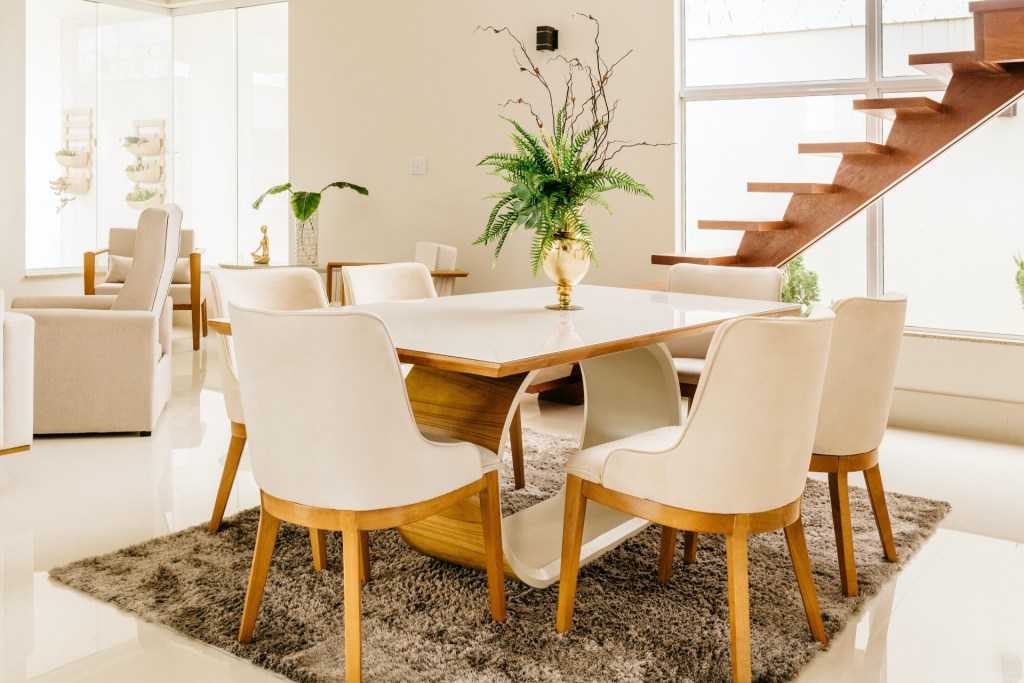
Select the right rug shape
A good rule of thumb is to mirror your dining room table’s shape — rectangular, square, or circular. This will ensure balance and symmetry, which are two of the most important elements in home design.
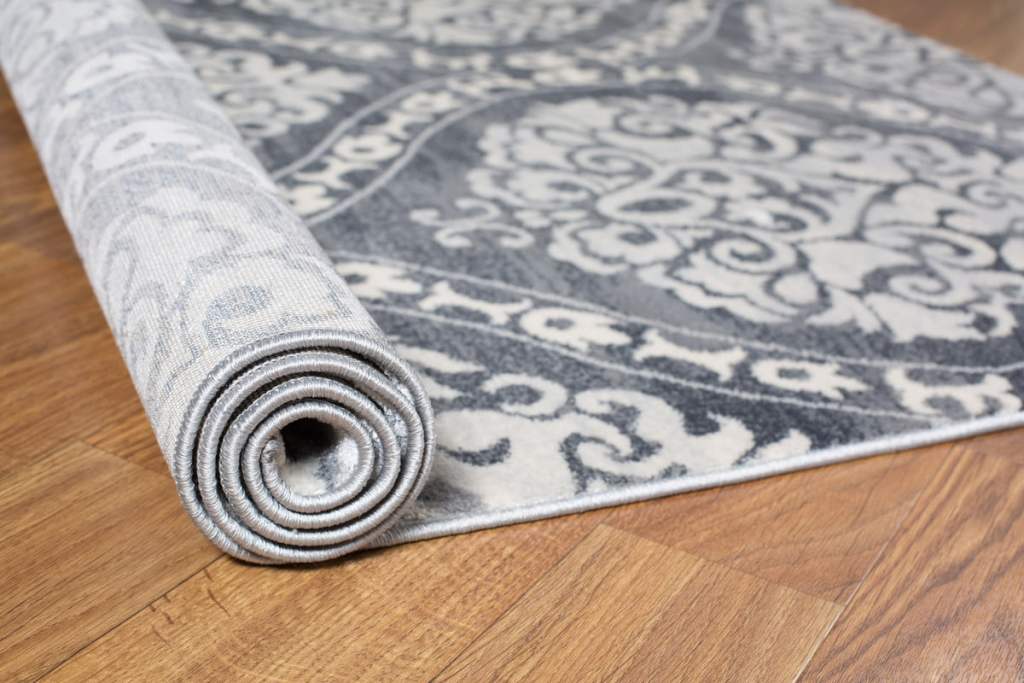
Choose a material suitable for the dining room
The material the dining room rug is made from makes a big difference. Practical can still be beautiful.
Step 1: Look for a rug with a small pile.
For practical reasons, one with a small pile — or a flat fiber density — is best in a dining room. Save high pile rugs for bedrooms and living rooms. Not only will this prevent crumbs from getting trapped, but it will also make it easier to pull chairs in and out.
Step 2: Choose an easy-to-clean material.
Since the dining room is more susceptible to spills and messes, you will want to select a rug you can clean yourself. Cotton and wool tend to be easier to clean than synthetic fibers. Another good option is indoor/outdoor rugs; they come in various styles and can be scrubbed if needed. Natural fiber rugs like sisal and jute may give a beautiful neutral backdrop to some rooms but are not the best choice for dining rooms since wiping can cause food to permeate further into them.
Step 3: Stick with darker patterns.
It goes without saying that the dining room rug should be a dark color in case of spills and dropped food. Darker or patterned ones will hide stains better.
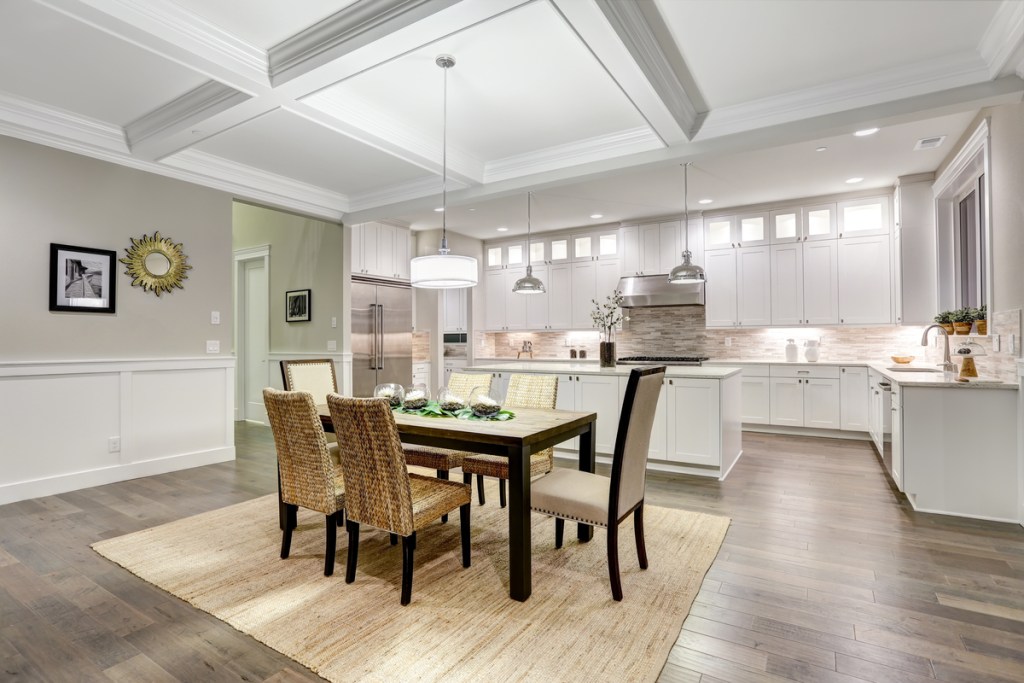
What color should not be used in dining spaces?
In dining spaces, it's wise to exercise caution with the color red. While red is believed to stimulate appetite and create a cozy ambiance, excessive use can overwhelm the senses and look kitchy. Conversely, blue shades are thought to suppress appetite and create a more calming atmosphere, which may not be ideal for a dining area where you want to encourage hearty meals and lively conversation.
Striking a balance between the two is key — incorporating red as an accent or in moderation can be appealing, while complementing it with softer, neutral tones can create a harmonious dining environment that caters to both appetite and enjoyment.
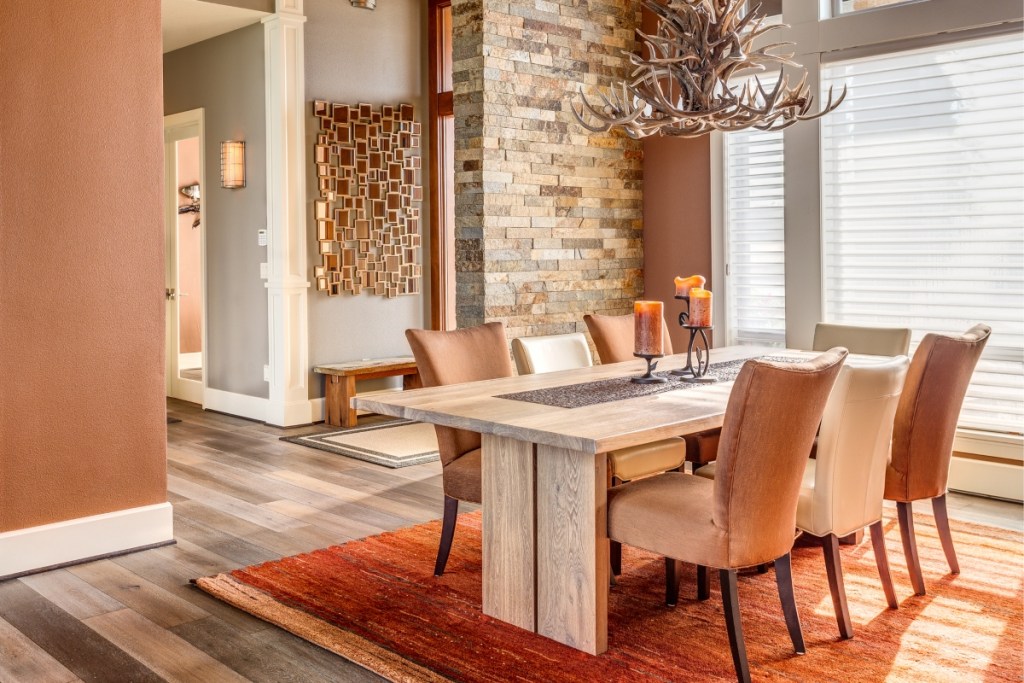
Design around the rug
Area rugs are often the foundation of a room’s decor, but this is even more true in a dining room. Since the table and chairs are the main event, there is less opportunity to bring fabrics and accessories in. Since the biggest pieces are often made of wood or other neutral materials, the rug allows you to incorporate color and tie elements such as wall paint and curtains together.
Stay away from borders if your rug will not be centered in the room. Instead, look for a rug with a bold, sweeping pattern. Visually, this will move the eye around the room. Also, if the floor in the space is in bad condition, a bold, visually stimulating rug will draw attention away from it.
Many homes today have open-floor plans. While these layouts are great for entertaining, you must ensure the rug complements the overall design. Rugs are a great way to specify different zones in an expansive room and should incorporate the same colors and style as the other spaces.
A dining room is often the place in a home where some of the biggest moments occur. It’s a place where family and friends come together. The right rug can add a warm and welcoming aesthetic to your dining room, creating a space that your guests will remember.
